My pygame project is revolved around an adventure game, ive got the basic character down, but cant seem to make an npc character.
My idea is to give the npc character an idle form, where it's head bobs left to right, but it just doesnt works, while also lags the game
heres the code ->
import sys,time,pygame,os
from pygame import mixer
pygame.init()
pygame.mixer.init()
#main displays
width,height=(900,600)
border= pygame.Rect(0,0,6,height)
WIN=pygame.display.set_mode((width,height))
pygame.display.set_caption("rpg game")
bg= pygame.image.load(os.path.join('','pixel_bg.jpg'))
bg=pygame.transform.scale(bg,(width,height))
junkyard_bg= pygame.image.load(os.path.join('','junkyard_bg.jpg'))
bar_bg=pygame.image.load(os.path.join('','bar_bg.jpg'))
cafe_bg=pygame.image.load(os.path.join('','cafe_bg.jpg'))
city_bg=pygame.image.load(os.path.join('','city_bg.jpg'))
city_bg_clear=pygame.image.load(os.path.join('','city_bg_clear.png'))
#characters
c_scale_width=80
c_scale_height= 90
c_scale_stand_width=90
c_scale_stand_height= 105
c_s_y= 290
cx = 0
cy = 480
move_left = False
move_right = False
standing_1 = pygame.image.load(os.path.join('','P1(stand).png'))
standing=pygame.transform.scale(standing_1,(c_scale_stand_width,c_scale_stand_height))
P2_right_11=pygame.image.load(os.path.join('','P1(1).png'))
P2_right_1=pygame.transform.scale(P2_right_11,(c_scale_width,c_scale_height))
P2_right_12=pygame.image.load(os.path.join('','P1(2).png'))
P2_right_2=pygame.transform.scale(P2_right_12,(c_scale_width,c_scale_height))
P2_right_13=pygame.image.load(os.path.join('','P1(3).png'))
P2_right_3=pygame.transform.scale(P2_right_13,(c_scale_width,c_scale_height))
P2_right_14=pygame.image.load(os.path.join('','P1(4).png'))
P2_right_4=pygame.transform.scale(P2_right_14,(c_scale_width,c_scale_height))
P2_right= [P2_right_1,
P2_right_2,
P2_right_3,
P2_right_4]
P2_left_1= pygame.transform.flip(P2_right_1,True,False)
P2_left_2= pygame.transform.flip(P2_right_2,True,False)
P2_left_3= pygame.transform.flip(P2_right_3,True,False)
P2_left_4= pygame.transform.flip(P2_right_4,True,False)
P2_left= [P2_left_1,
P2_left_2,
P2_left_3,
P2_left_4]
step_index=0
#npc 1
npc_scale_width=80
npc_scale_height= 90
npc_x=400
npc_y=400
npc1_1_pre=pygame.image.load(os.path.join('','npc_animation_1.png'))
npc1_2_pre=pygame.image.load(os.path.join('','npc_animation_2.png'))
npc1_3_pre=pygame.image.load(os.path.join('','npc_animation_3.png'))
npc1_1=pygame.transform.scale(npc1_1_pre,(npc_scale_width,npc_scale_height))
npc1_2=pygame.transform.scale(npc1_2_pre,(npc_scale_width,npc_scale_height))
npc1_3=pygame.transform.scale(npc1_3_pre,(npc_scale_width,npc_scale_height))
npc_arr=[npc1_1,npc1_2,npc1_3]
#speed
Velocity= 4
global jump_vel_y
jump_vel_y = 15
jump_height = 3
FPS = 60
global jump
jump= False
#music
mixer.music.load("adventurebeat.mp3")
mixer.music.play(-1)
def c_move(keys_pressed):
global move_left
global move_right
global jump
global cx
global cy
global jump_vel_y
global step_index
current_image = standing
if step_index >= 4:
step_index = 0
if keys_pressed[pygame.K_a]: # left
cx -= Velocity
move_left = True
elif keys_pressed[pygame.K_d]: # right
cx += Velocity
move_right = True
else:
move_left = False
move_right = False
step_index = 0
if jump is False and keys_pressed[pygame.K_SPACE]:
jump = True
if jump:
cy -= jump_vel_y
jump_vel_y -= 1
if jump_vel_y < -15:
jump = False
jump_vel_y = 15
step_index=0
if move_right:
current_image = P2_right[step_index // 2]
step_index += 1
elif move_left:
current_image = P2_left[step_index // 2]
step_index += 1
WIN.blit(current_image, (cx, cy))
pygame.display.update()
def npc1():
for x in range(len(npc_arr)):
WIN.blit(npc_arr[x],(npc_x,npc_y))
time.sleep(0.03)
def draw():
WIN.blit(city_bg_clear, (0, 0))
def main():
clock = pygame.time.Clock()
run = True
while run:
clock.tick_busy_loop(FPS)
for event in pygame.event.get():
if event.type == pygame.QUIT:
run = False
pygame.quit()
sys.exit()
keys_pressed = pygame.key.get_pressed()
c_move(keys_pressed)
draw()
npc1()
main()
heres an image for reference
The character used to move fast, but after adding the npc's code, the character goes into slow-mo
im pretty sure this is because of the time.sleep(0.03), but i use that to make the npc's animations not get blited instantly. (but i dont really need to add that since its not even blitting without the time.sleep)
Does anyone have any suggestions on how to solve this? (or any ways to make the npc have idle movements)
thanks in advance
